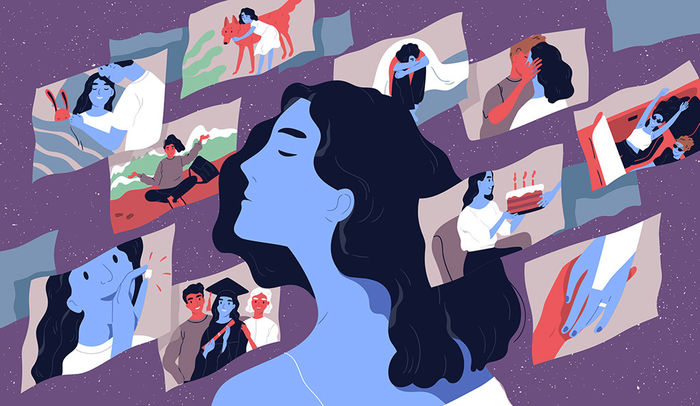The importance of ageing female role models
Reflecting on the ultimate legacy and passing of Supreme Court judge Ruth Bader Ginsburg, Georgia Goble shares how ageing female role models remind us that you are never too old to do what you love.
On 18 September 2020, the Supreme Court judge Ruth Bader Ginsburg died aged 87 from cancer, having overcome the disease four times previously.
Ginsburg’s legacy is immense. A champion for women’s rights, Ginsburg set legal precedents that eventually led discrimination on the basis of sex to be declared unconstitutional in several areas of US law. From tax law to estate benefits, Ginsburg continually fought to challenge the discriminatory system. In 1993, she was nominated by president Clinton onto the Supreme Court, where she served until her death.
In recent years, Ginsburg became somewhat of a pop-culture icon and cult liberal heroine as the ‘notorious RBG.' Her face was plastered on T-shirts and mugs. “It was beyond my wildest imagination. […] I am now 86 years old,” she said last year , “and yet people of all ages want to take their picture with me.”
“The media is a powerful agent of socialisation, meticulously carving out the curves and contours of our collective consciousness.”
It seems obvious that a woman with so many years of success behind her should be celebrated to such an extent and that we would worship the immense knowledge and wisdom of the older subdivision of society. And yet, predominantly, the limelight is dominated by very young women. From pop-stars to actresses to broadcasters, in our culture as it stands, youth is the currency of female value, and female youth is fetishized to such an extent that older women and their experiences are rendered almost entirely invisible. “We don’t talk about third acts,” says feminist writer Caitlin Moran. “All of the movies are about finding love, sorting out who you are in your younger years, and then the stories just stop […] you kind of disappear from popular culture.”
Indeed, in rom-coms and sitcoms alike, the happily ever after always seems to come around the age thirty, give or take a few years. As Moran notes, we never get to see what happens next. And this is not an ineffectual narrative. The media is a powerful agent of socialisation, meticulously carving out the curves and contours of our collective consciousness. So much so, that I would argue that this particular narrative has created a collective ‘arrival fallacy.’ As psychologist Tal Ben-Shahar defines the concept, ‘arrival fallacy’ is the “illusion that once we attain our goal or reach our destination, we will reach lasting happiness.”
While this concept is predominantly applied to career goals, I would argue that it very much applies to the conventional happy ending we see in films, of marriage and pregnancy. In fact, of the young women I spoke to, the vast majority said that they never think to dream of all the things they can achieve in later life, forgetting they have their whole lives, that being decades upon decades of time, to cultivate successful and fulfilling careers, due to their preoccupations with marriage and fertility. “I feel like I’m in such a rush,” one woman told me, “to be successful and financially stable before thirty, so I can have children. I never really think about what comes next.” And why would we? In a society in which we are constantly fed the narrative that marriage and babies will ‘complete’ us, why would we have cause to think that anything that comes next has any worth at all?
In such a youth-centric culture, ageing female role models exist as a constant reminder that female achievement and worth is not capped by age. One need only think of Bernadine Evaristo, who found global success aged 60 upon winning the 2019 Booker Prize, after a 38 year long career in the arts. Or Gloria Steinem, who still publishes critical feminist works well into her eighties. Or, of course, Dames Judi Dench and Maggie Smith who, aged 85, after decades upon decades as phenomenal leading ladies in film, TV and theatre alike, are no less exquisite than they ever were — Dench even appeared on the cover of British Vogue in May.
While we’ve made leaps and bounds in the progression of women in the workplace in the last fifty years, female success is far more than a 20-something #girlboss in a power suit.
“In such a youth-centric culture, ageing female role models exist as a constant reminder that female achievement and worth is not capped by age.”
“I was age 60 when I was nominated [to the Supreme Court] and some people thought I was too old for the job,” Bader Ginsburg said last year. “Well, now I’m into my 27th year on the Court. I’m one of the longest tenured justices. So if you worried about my age, it was unnecessary.”
If this unforgettable legal icon taught us anything, it’s that you are never too old to do what you love.
 News / Cambridge academics stand out in King’s 2026 Honours List2 January 2026
News / Cambridge academics stand out in King’s 2026 Honours List2 January 2026 Interviews / You don’t need to peak at Cambridge, says Robin Harding31 December 2025
Interviews / You don’t need to peak at Cambridge, says Robin Harding31 December 2025 Comment / What happened to men at Cambridge?31 December 2025
Comment / What happened to men at Cambridge?31 December 2025 Features / “It’s a momentary expression of rage”: reforming democracy from Cambridge4 January 2026
Features / “It’s a momentary expression of rage”: reforming democracy from Cambridge4 January 2026 News / Varsity’s biggest stories of 202531 December 2025
News / Varsity’s biggest stories of 202531 December 2025











